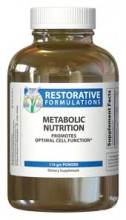As a practitioner, I struggle with the multivitamin. Why, you ask?

In theory, the multivitamin is a good concept. Just as life has pros and cons, ebb and flow, it is difficult to eat consistent quantities and qualities of foods that provide continuous and adequate amounts of the nutrients we need. In fact, considering most people eat 2 decent meals daily when they really should be having 3 + snacks, I know most of you are not getting adequate vitamins and minerals through your diet. In addition, there is a lot of confusion about what foods are the right foods to eat for the right purposes.
Enter the multivitamin, where in one little pill you can cover your basics all in one shot.
Or can you?
The market for vitamins has changed immensely in the last 10–15 years. My memory of multivitamins is completely unswallowable missiles that you need to choke back, and they smelled funny (well, except for Flintstones’ vitamins which tasted like candy).
Multivitamins have vastly improved since then. However, if you purchase a multivitamin without the right nutrient education, I am not sure you will be feeling physically different other than the psychological relief of knowing you might be doing something good for your body.
So how do you without medical knowledge recognize the kind of vitamins you might need on a daily basis? How can you distinguish what is a good multivitamin and what is a bad multivitamin? Here are a few tips:
- Fillers and colours should not be in your vitamin. You should not be seeing the words soy lecithin, lactate, lactose, etc. These are food fillers that are really getting in the way of absorption. Neither should there be preservatives or artificial colours. If you are just taking back the multi, what does it matter what colour it is?
- If you need to take too many vitamins to meet the daily amount, what is actually in each pill? For example, the 1 mg dose of thiamin (B1) found in a typical multi would not be adequate to compensate for the occasional night of imbibing on too much wine with dinner (in which thiamine becomes rapidly depleted fyi…)
- Lower beta-carotene—Found in carrots and highly beneficial in a food source, high beta-carotene (+10,000 IU) has been linked to increased incidence of cancer in a supplemented form, especially in individuals with heart disease and a history of smoking.
- Lower vitamin E—Vitamin E is a fantastic fat-soluble vitamin however it can contribute to cardiovascular episodes in the wrong chemical composition. Great on the surface of the skin; not wonderful internally in excessive dosages for every medical condition.
- Decent proportions of B vitamins—More than 5 mg per B vitamin is important. To properly supplement the B’s, normally 20–25 mg is where we can start. B5 for example can start at 100 mg/day (please do not supplement without your doctor’s approval at higher dosages). Each B has an optimum range.
- Balanced calcium and magnesium—Like a big sister and little sister, these go as pairs.
- Balanced zinc and copper—Again, in pairs. Too much of one throws off the other.
- Vitamin D—At LEAST 1,000 IU.
- B12—This is best supplemented under the tongue if you are truly deficient, and so if you are B12-deficient, a multi-vitamin will not be adequate.
- Iron should not really be in your multi and should always be separate. There are several reasons for this, but the short explanation is that not everyone needs iron (men as an example). When you do need iron, you will need far more than what can be supplied in a multivitamin, and it would be far more useful to supply useful iron at that time at dosages and composition that is tailored to you.
- Your multi should actually be expensive, in the ball park range of $30–$40. If you are getting that many nutrients in one bottle, why should it be $9?